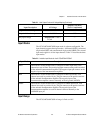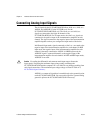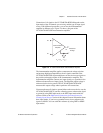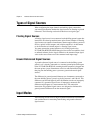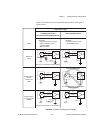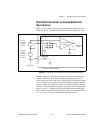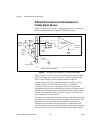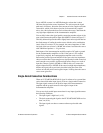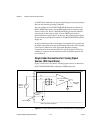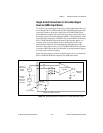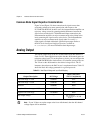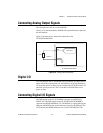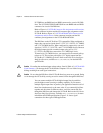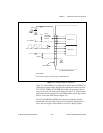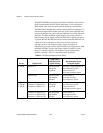Chapter 2 Hardware Overview of the NI 78xxR
© National Instruments Corporation 2-13 R Series Intelligent DAQ User Manual
line to AIGND, connect it to AIGND through a resistor that is about
100 times the equivalent source impedance. The resistor puts the signal
path nearly in balance. About the same amount of noise couples onto both
connections, which yields better rejection of electrostatically coupled
noise. Also, this input mode does not load down the source, other than the
very high-input impedance of the instrumentation amplifier.
You can fully balance the signal path by connecting another resistor of the
same value between the positive input and AIGND, as shown in Figure 2-7.
This fully balanced input mode offers slightly better noise rejection but has
the disadvantage of loading down the source with the series combination
(sum) of the two resistors. If, for example, the source impedance is 2 kΩ
and each of the two resistors is 100 kΩ, the resistors load down the source
with 200 kΩ and produce a –1% gain error.
Both inputs of the instrumentation amplifier require a DC path to ground
for the instrumentation amplifier to work. If the source is AC coupled
(capacitively coupled), the instrumentation amplifier needs a resistor
between the positive input and AIGND. If the source has low-impedance,
choose a resistor that is large enough not to significantly load the source but
small enough not to produce significant input offset voltage as a result of
input bias current, typically 100 kΩ to 1 MΩ. In this case, connect the
negative input directly to AIGND. If the source has high output impedance,
balance the signal path as previously described using the same value
resistor on both the positive and negative inputs. Loading down the source
causes some gain error.
Single-Ended Connection Considerations
When an NI 783xR/784xR/785xR AI signal is referenced to a ground that
can be shared with other input signals, it forms a single-ended connection.
The input signal connects to the positive input of the instrumentation
amplifier and the ground connects to the negative input of the
instrumentation amplifier.
You can use single-ended input connections for any input signal that meets
the following conditions:
• The input signal is high-level (>1 V).
• The leads connecting the signal to the NI 783xR/784xR/785xR are less
than 3m(10ft).
• The input signal can share a common reference point with other
signals.



